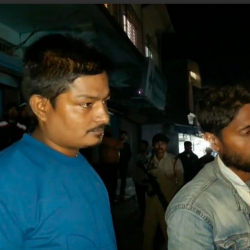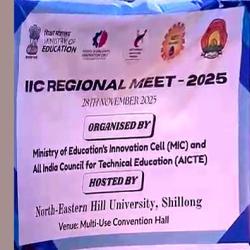Brahmaputra basin encompassing North East Region of India is one among the water rich basins in the world. Annual available surface water potential of the region (Brahmaputra-Barak basin) is 585.60 km3, which is 31.33% of the national potential. Surface water potential of Brahmaputra basin is highest of all the river basins in the country (11.54% more than that of Ganga basin). Annual groundwater potential of the region is 26.55 km3, which is 6.15% of the National potential. With geographical area of 7.3% of the total area of India, The basin houses 4.2% population. Annual available water resource of the basin is 31.33% of national potential. Per capita water availability in the Brahmaputra basin is 16589 cum per year, in comparison to national per capita availability is 2208 cum per year. The region has 751% of per capita availability of National average. Erosion potential is very high in the region because the basin is highly undulating and also experiences heavy annual rainfall of about 5100mm to 6400mm in Arunachal Hills and 2500mm to 5400 mm in Brahmaputra plains. As surface water flow through the region, it carries vast amount of sediment also, which is estimated as 735 MTon/year which is equivalent to 2.01 Million Tonnes of sediment everyday.
This vast amount of water is mostly unutilized and cause of flood during monsoon. For decades, hundreds of crores are spent on various plans and programmes for reducing the flood, which have very unfortunately proven to be not effective. One might wonder why all these effort are not functional properly. One of the root causes may be lack of proper hydro-meteorological data and other relevant catchment information while planning all the flood reduction (or control) works. Perhaps it would have been more effective if we had prepared flood reduction or control plans on catchment basis, which is not followed for some unknown reasons. All our plans are curative measures rather than preventive ones. A deeper analysis of the problem might lead us to the fact that there is lack of water resource inventory at catchment level for tributaries of Brahmaputra and Barak rivers. It is noteworthy to mention that these tributaries are responsible for majority of flood, which have their catchments in upper reaches in hills.
Another dimension of water resource related problem in the basin is mono cropping in agriculture. Most of the farmers in entire North East Region can not grow second crop due to non availability of water during winter months and depletion of ground water level. It is perplexing that having so vast amount of water farmers can not grow second crop. This is one of the most challenging task for water resource engineers of the region.
All these could be possible with efforts from R&D, academics, Govt. departments with proper and sufficient infrastructure for ground data collection and basic compilation for all necessary hydrological, meteorological and other relevant parameters. Central Water Commission (CWC) and India Meteorological Department (IMD) have great roles to play in this context. However, very unfortunately proposed restructuring of CWC has given least importance on the Brahmaputra-Barak Basin.
The proposed restructuring gives highest importance on Ganga and Krishna-Godavari basins as shown in the Tables below. Though Brahmaputra-Barak basin is richest in terms of surface water there are 129 hydrological stations whereas there are 360 stations in Ganga basin and 158 stations in Krishna-Godavari basin (32.22% of surface water potential of Brahmaputra-Barak basin) (Table2). Numbers of hydrological stations may suitably be increased in Brahmaputra-Barak basin so that all the tributaries are gauged in proper locations. It is also worthwhile to mention that Brahmaputra river has about 150 numbers of tributaries. These tributaries are not of stream order 1 but orders are up to 5-6. Therefore the number of stations may suitably increased. Owing to high rainfall and highly undulating terrain, stream frequency and drainage density are also very high in comparison to other basins of the country.
Proposed basin wise manpower allocation may also kindly be reviewed. It is observed that manpower proposal for Ganga basin is 2715, which is 273% higher than that for Brahmaputra-Barak basin. Manpower proposal for Krishna-Godavari basin is also 34.6% higher than that for Brahmaputra-Barak basin (Table3).
Financial implications for restructuring has also reflected similar picture. Proposals for Ganga, Brahmaputra-Barak and Krishna-Godavari are 10813.628, 2870.664 and 10417.388 Lakhs respectively (Table4).
Proposed number of basin offices for Ganga, Brahmaputra-Barak and Krishna-Godavari are 859, 259 and 684 respectively (Table5).
It would be scientific and logical if allocations of facilities, manpower and other resources are made proportionate to water resource potential. This will help in making inventory of water resources of hydro-meteorologically rich and sensitive North Eastern Region of India. Understanding hydro-meteorological characteristics of catchments of the tributaries will lead to plans for reducing flood and increasing water use efficiency.
Table1. Basin wise water Resource: (Km3/Yr)
Basin | Ganga
| Brahmaputra & Barak | Krishna | Godavari | Krishna & Godavari | Mahanadi |
Surface Water | 525.02 | 585.60 | 78.12 | 110.54 | 188.66 | 66.88 |
Ground Water | 170.99 | 26.55 | 26.41 | 40.65 | 67.06 | 16.46 |
Table2. Basin wise hydrological stations:
Basin | Ganga
| Brahmaputra & Barak | Krishna | Godavari | Krishna & Godavari | Mahanadi |
No of stations | 360 | 129 | 73 | 83 | 156 | 34 |
Table3. Basin wise Manpower
Basin | Upper Ganga | Lower Ganga | Ganga Total | Brahmaputra & Barak | Krishna & Godavari | Mahanadi & Eastern Rivers |
Existing manpower | 732 | 1334 | 2066 | 612 | 445 | 189 |
Required manpower | 1651 | 2408 | 4059 | 980 | 2252 | 868 |
Proposed manpower | 1059 | 1656 | 2715 | 728 | 980 | 442 |
Table4. Financial implications for restructuring: (Rs. In Lakhs)
Upper Ganga | Lower Ganga | Ganga Total | Brahmaputra & Barak | Krishna & Godavari | Mahanadi & Eastern Rivers |
5396.144 | 5417.484 | 10813.628 | 2870.664 | 10417.388 | 5767.876 |
Table5. Basin offices after restructuring
Upper Ganga | Lower Ganga | Ganga Total | Brahmaputra & Barak | Krishna & Godavari | Mahanadi & Eastern Rivers | |
Existing | 174 | 111 | 285 | 163 | 125 | 73 |
Proposed | 429 | 430 | 859 | 259 | 684 | 335 |
Data source for Tables2-5: Restructuring of Central Water Commission, (Volume: I &II), Published by Ministry of Water Resources, Government of India, New Delhi, May, 2011.
- Add new comment
- 9391 reads









Comments
Pages
Add new comment